JARED RAGLAND
WHAT HAS BEEN WILL BE AGAIN
American exceptionalism, that sense that we are somehow special and ordained as such, is a myth sedimented on Southern prosperity…. But even if you are a lover of the national romance, integrity requires that the stories be at least halfway honest. It is not enough to set aside a little time or attention here or there to grieve our national sins, then, soft as butter, turn back to proclamations of greatness. Because history is an instruction. And what you neglect to attend to from the past, you will surely ignore in the present.
– Imani Perry, South to America
From Indigenous genocide to slavery and secession, and from the fight for civil rights to the championing of MAGA ideology, the national history written on, in, and by the people and landscapes of Alabama reveal problematic patterns at the nexus of our larger American identity. Photographed at a critical moment of pandemic and protest, economic uncertainty, and political polarization, “What Has Been Will Be Again” has led photographer Jared Ragland across more than 25,000 miles and into each of Alabama’s 67 counties to survey his home state’s cultural and physical landscape.
Social isolation is both a phrase and experience that has defined the recent past, and “What Has Been Will Be Again” expressly evokes the alienation that has characterized the moment. Yet the photographs bear witness to sites for which isolation and violence is nothing new—places where extracted labor and environmental exploitation have exacted heavy tolls over generations. Such isolation is less accidental or temporal, and more a product of decades of willful neglect by a mainstream America only now starting to visualize what—and who—has been pushed out of the collective frame of vision.
Working deep in territory considered a “repository of national repressions,” Ragland traveled via routes connected to a brutal colonial legacy, following the path of Hernando de Soto’s 1540 expedition, the Trail of Tears, the Old Federal Road, and the slave ship Clotilda. The energy of these specific historical sites is often charged with anxiety, violence, and peculiarity, and the resulting photographs serve as disquieting studies in black and white that depict “outsiders,” haunting landscapes, and decay, each imbued with a pensive fear, tension, and sense of mortality. Despite their strangeness, the photographs are visually familiar, creating a through-line with 20th century representations of Southern Gothic themes. Lest the visual familiarity of the work breed a sort of comfortable, passive viewing, the inclusion of meticulously researched captions require the viewer to connect historical trauma and current sociopolitical issues and confront white supremacist myths of American exceptionalism.
//
Each image is sized at 18x21 inches, framed in black wood, no glazing.
Accompanying caption texts are presented on museum-style wall labels.
.....................................

SPRING HILL, BARBOUR COUNTY, ALABAMA
MICHAEL FARMER, 57, FASHIONS A SCARECROW NEXT TO HIS GARDEN ON ELECTION DAY, 2020.
Michael Farmer’s family has lived in Spring Hill for generations, where the predominantly Black community has faced a history of racial violence and voter disenfranchisement. On November 3, 1874 a white mob attacked the Spring Hill polling station, destroying the ballot box, burning the ballots, and murdering the election supervisor’s son. Farmer is a lifelong Democrat and military veteran who served two tours overseas in Operation Desert Storm and Operation Iraqi Freedom. When asked what he hoped might come from the 2020 presidential election, Farmer said, “I hope the young folks might think about what their ancestors came through to get where we are.”Archival pigment print
2020-2023
18x21 inches
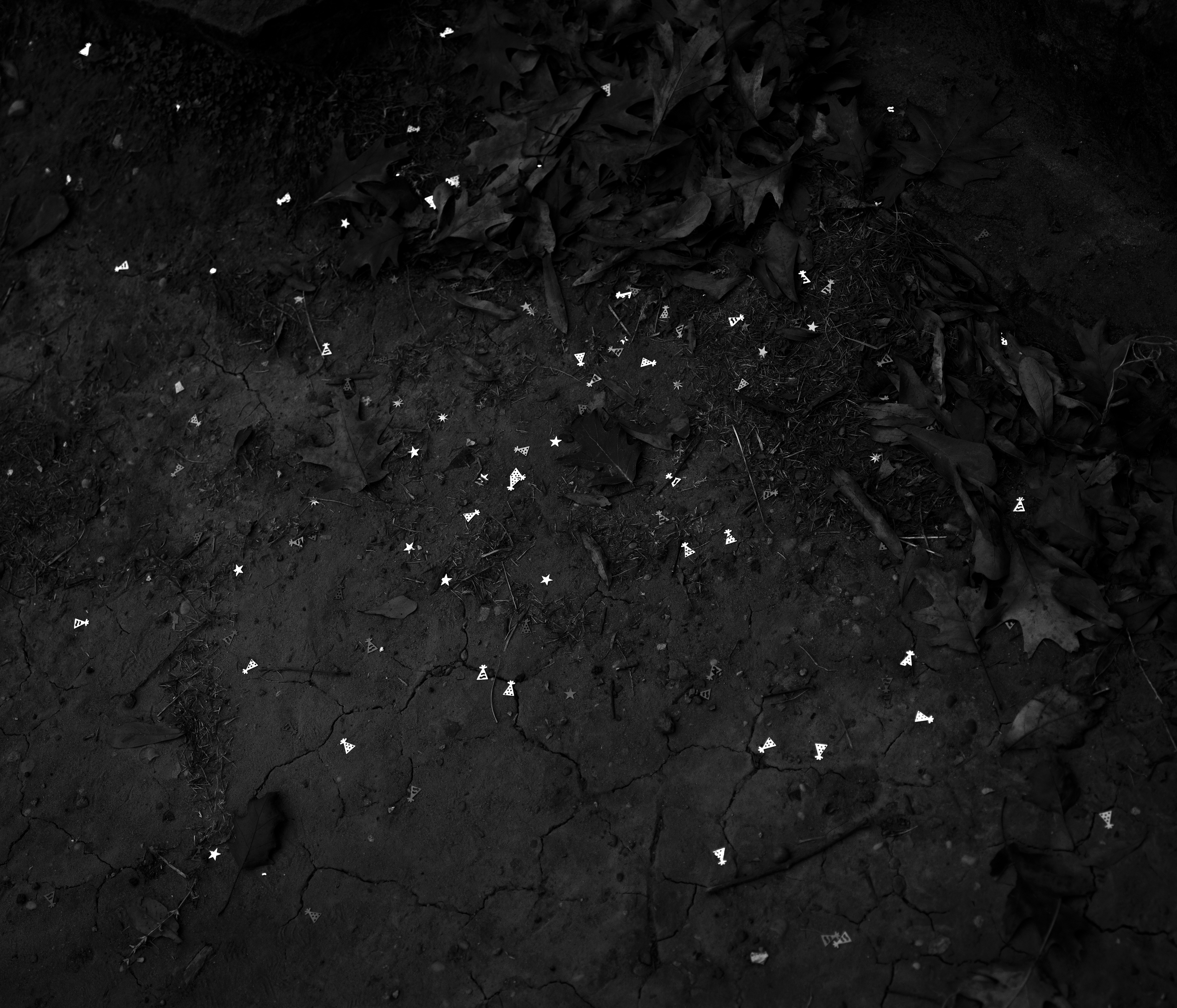
TUSCALOOSA, TUSCALOOSA COUNTY, ALABAMA
GLITTER SCATTERED ON THE RUINS OF THE FORMER ALABAMA STATE CAPITOL BUILDING.
Yoholo-Micco, chieftain of the Upper Creek town of Eufaula, is said to have addressed the Alabama Legislature in 1836 at the state capital in Tuscaloosa before departing the ancestral Muscogee homelands on the Trail of Tears. Yoholo-Micco’s actual words are unknown, but white, colonial writers of history have portrayed the Creek leader as one who accepted Indigenous removal with an air of romantic resignation, going so far as to contrive his final words in a way to whitewash the genocide that had taken place over 300+ years’ time. Yoholo-Micco’s apocryphal address – which has been reproduced in Alabama history books and grade school curriculum for decades – reads, in part: “I come here, brothers, to see the great house of Alabama and the men who make laws and say farewell in brotherly kindness before I go to the far west, where my people are now going. In time gone by I have thought that the white men wanted to bring burden and ache of heart among my people in driving them from their homes and yoking them with laws they do not understand. But I have now become satisfied that they are not unfriendly toward us, but that they wish us well.”Archival pigment print
2020-2023
18x21 inches
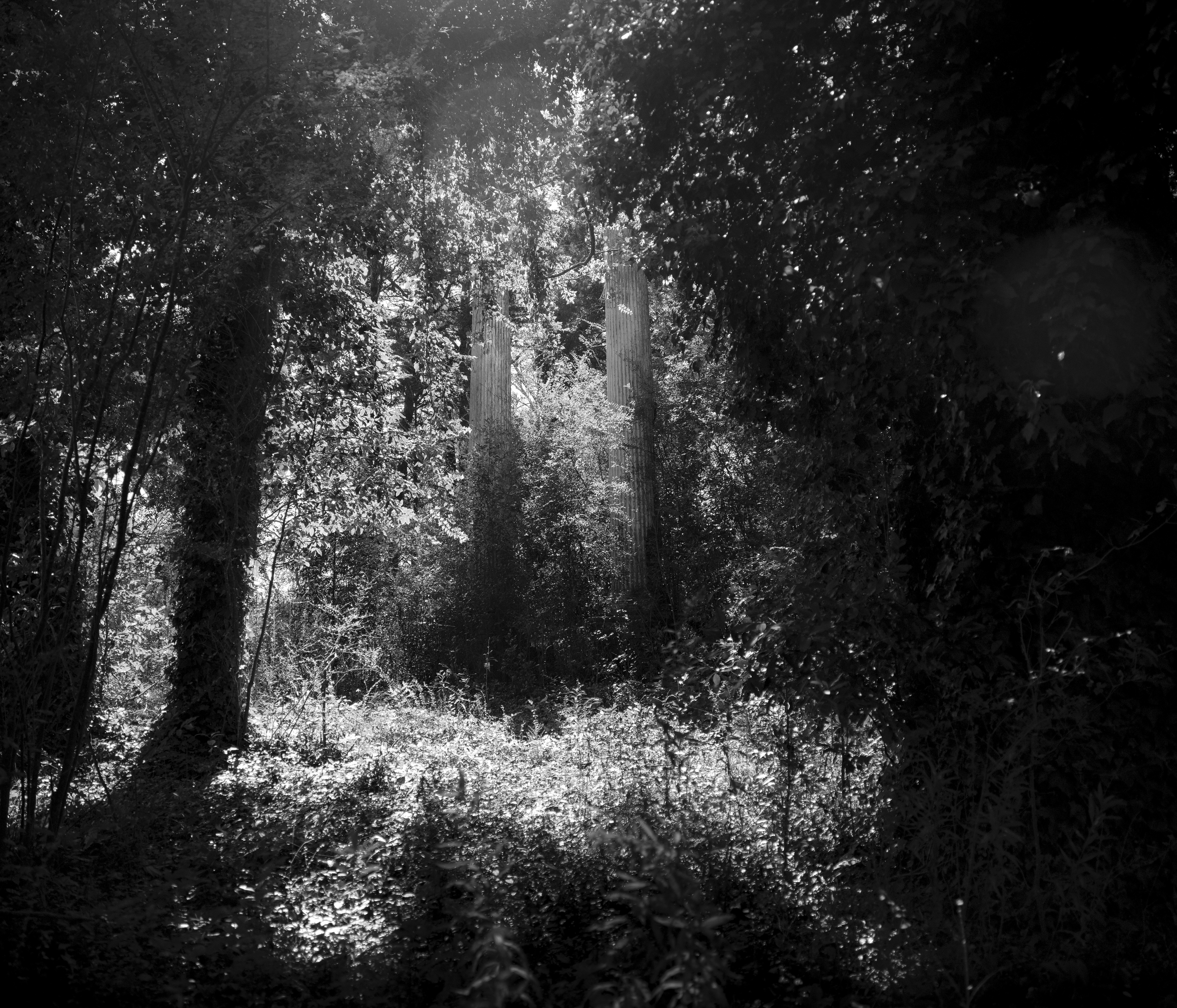
TALLADEGA COUNTY, ALABAMA
RUINS OF MT. IDA PLANTATION.
Destroyed by fire in 1956, the 1840 Greek Revival-style antebellum mansion was built for Walker Reynolds, who owned some 13,000 acres of land and several hundred enslaved persons. The plantation–located near the site of Abihka, once one of four mother towns of the Muscogee Creek confederacy–was reportedly a location for the 1915 white-supremacist film, The Birth of a Nation. Archival pigment print
2020-2023
18x21 inches
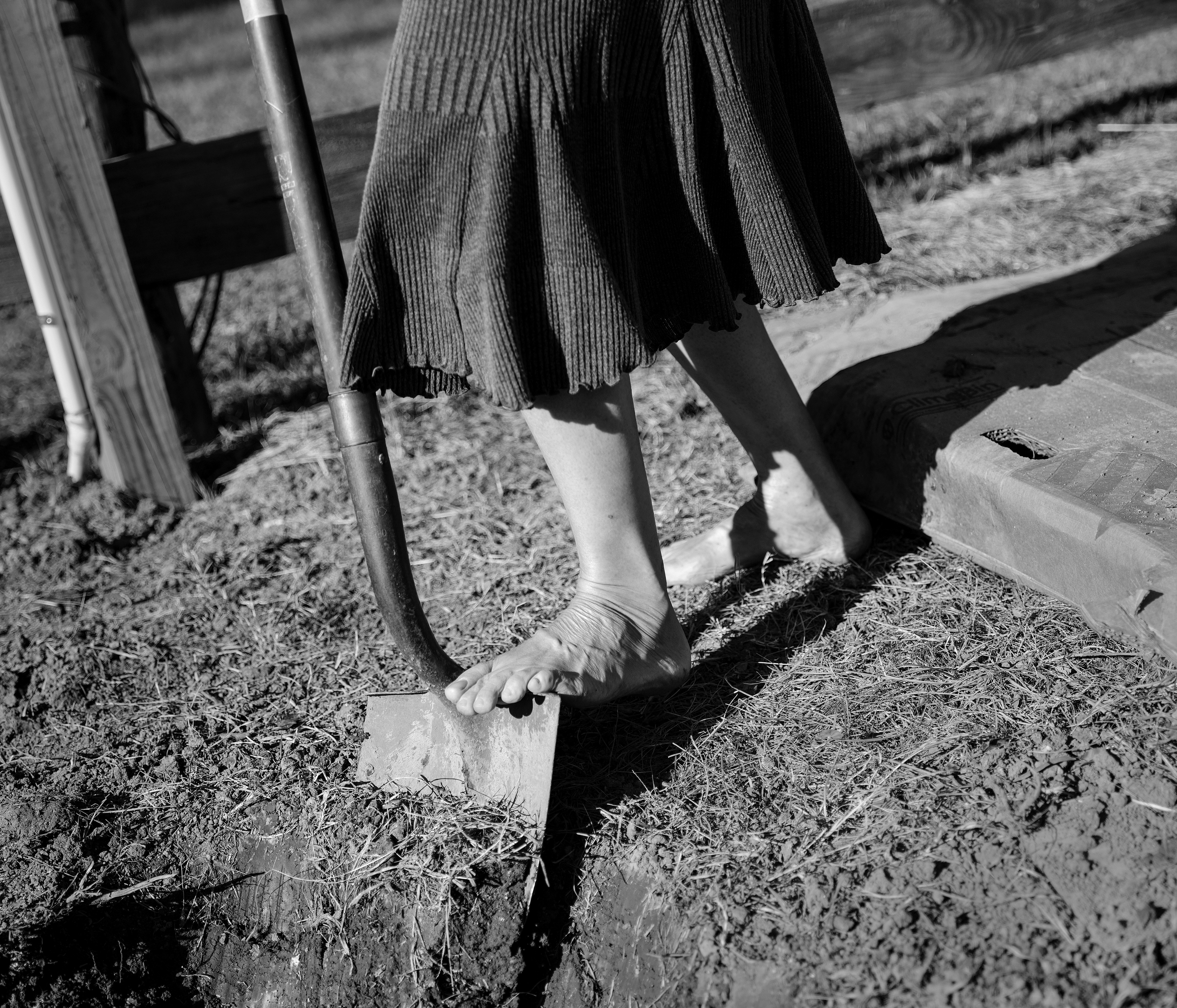
CHILDERSBURG, TALLADEGA COUNTY, ALABAMA
SUNSHINE TURNS SOIL IN THE COMMONS COMMUNITY WORKSHOP GARDEN.
As a response to national division and the COVID-19 outbreak, Sunshine and her husband Rusty bought a home in downtown Childersburg and created The Commons Community Workshop. Through their Fearless Communities Initiative they have built a community garden in a donated downtown lot, host trade days, and foster relationships with their neighbors as a means of “celebrating solidarity and strength.” The couple invited me to find them on Facebook where Sunshine posts Initiative announcements, vocalizes her opposition to vaccines, and shares her beliefs about global child sex trafficking networks, the threat of Marxism, and the coming of the end times.Archival pigment print
2020-2023
18x21 inches

PHENIX CITY, RUSSELL COUNTY, ALABAMA
MIKE.
Located on the Chattahoochee River near the former Creek centers of Coweta and Yuchi Town, Phenix City has known a fraught and violent history. In the mid 20th century, Phenix City was home to the Dixie Mafia, and as murders, prostitution, and gambling ran rampant the town became known as “the wickedest city in the United States.”Archival pigment print
2020-2023
18x21 inches

JACKSONVILLE, CALHOUN COUNTY, ALABAMA
TAXIDERMY TABLEAU WITH CONFEDERATE BATTLE FLAG.
Archival pigment print
2020-2023
18x21 inches
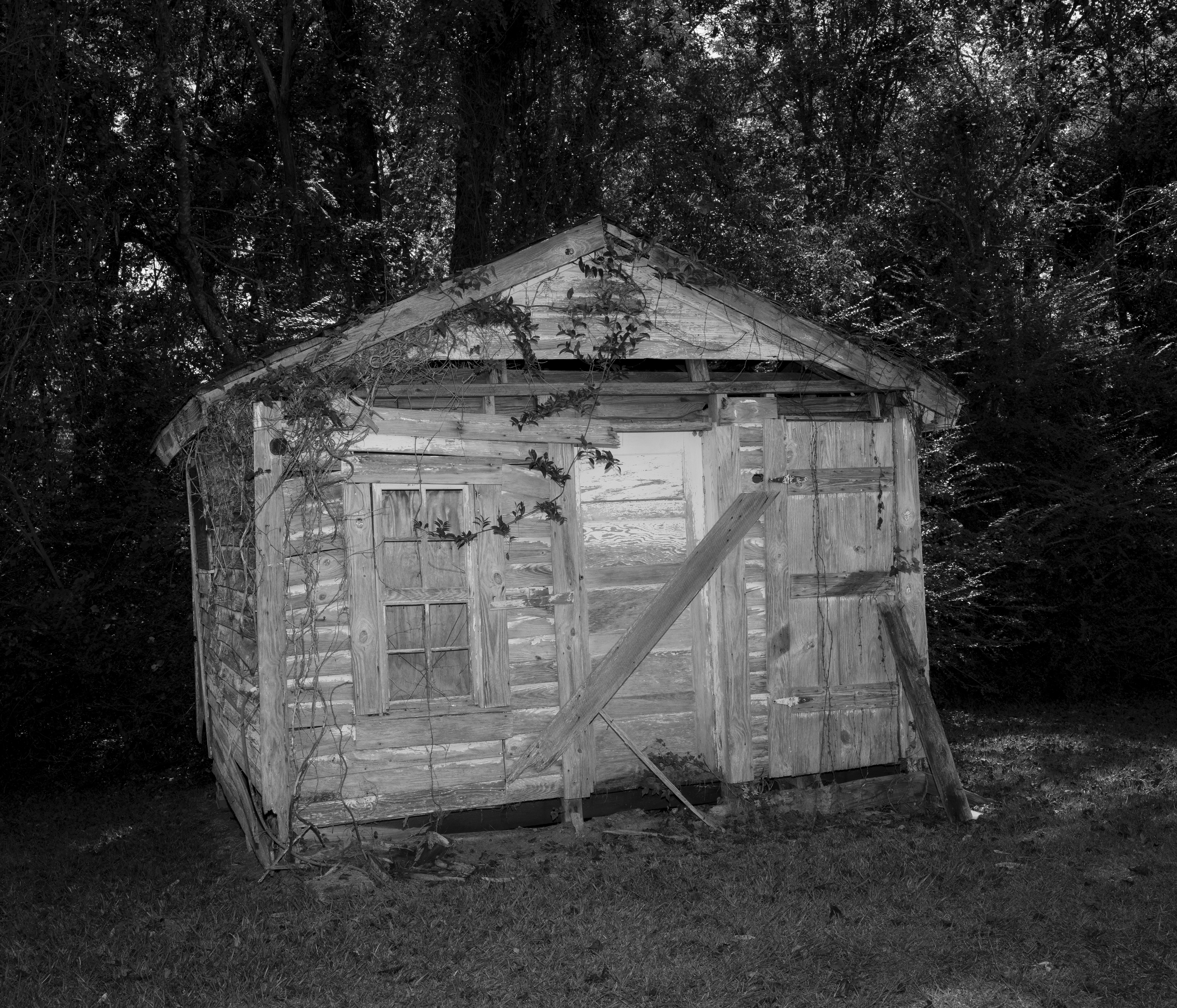
MARION, PERRY COUNTY, ALABAMA
BIRTHPLACE OF CORETTA SCOTT KING
Coretta Scott and Martin Luther King, Jr. were married on June 18, 1863 at her family home in Marion. That evening, the couple was rejected by a whites-only hotel in nearby Marion and were forced to spend their wedding night in a home that served as a Black-owned funeral parlor.Archival pigment print
2020-2023
18x21 inches
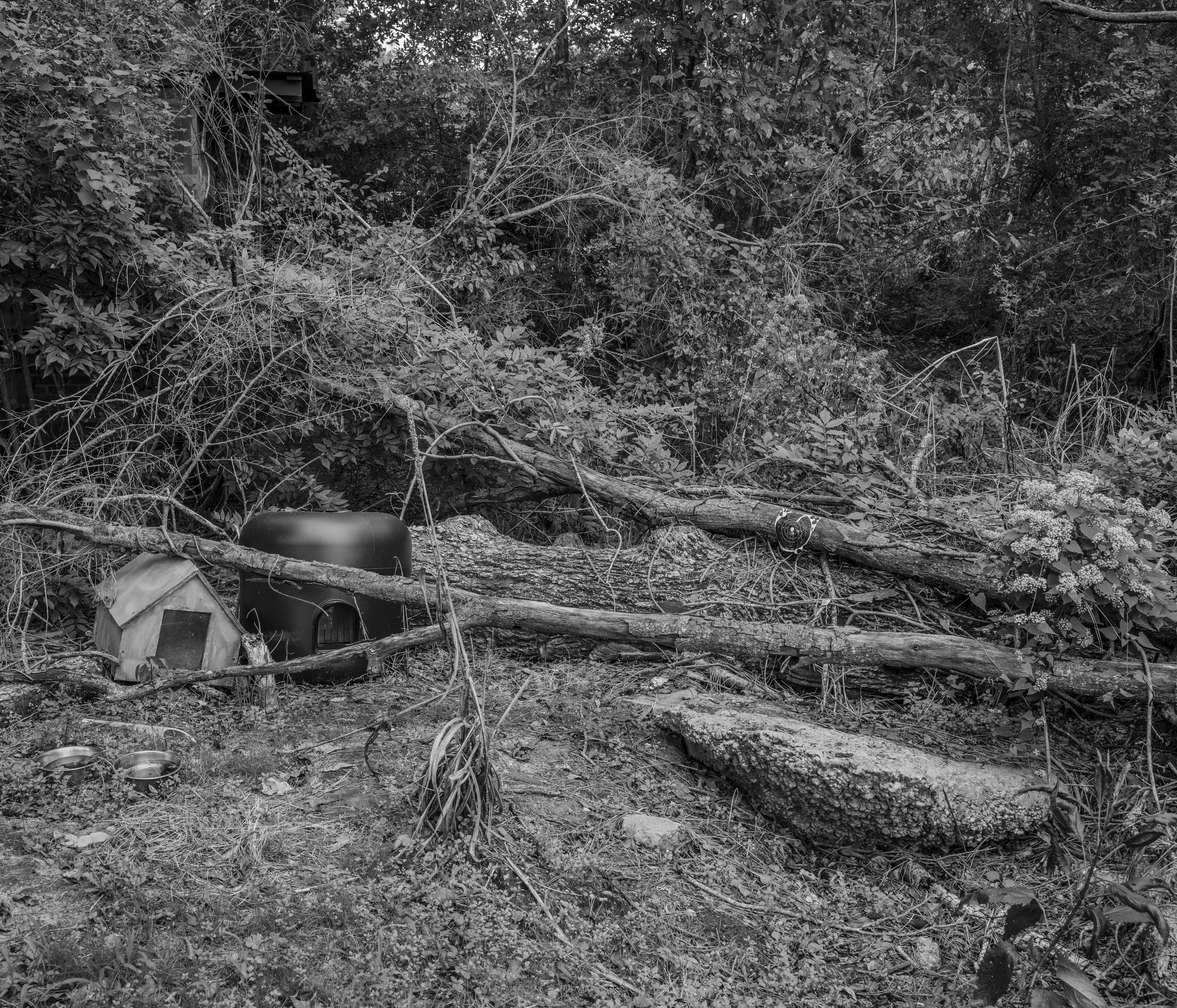
HAYNEVILLE, LOWNDES COUNTY, ALABAMA
BESIDE THE FORMER LOCATION OF VARNER’S CASH STORE, WHERE CIVIL RIGHTS ACTIVIST JONATHAN MYRICK DANIELS WAS SHOT TO DEATH BY TOM COLEMAN.
Jonathan Myrick Daniels, a white Episcopal seminarian from Keene, NH, had come to Alabama following Dr. Martin Luther King Jr.’s call for clergy to join the march from Selma to Montgomery. Daniels remained in Alabama after the march, assisting with voter registration efforts, working at a health clinic, and helping integrate an Episcopal congregation. In August 1965 Daniels and fellow activists attempted to purchase drinks at a Hayneville store but were held at gunpoint by volunteer special deputy sheriff Tom Coleman, who demanded they leave the property. Coleman shot at 17-year old African American activist Ruby Sales, but Daniels pushed Sales to the ground and took the impact of the blast, dying instantly. Coleman was charged with manslaughter in Daniels’ death, but an all-white jury acquitted Coleman of all charges after deliberating for less than two hours.Archival pigment print
2020-2023
18x21 inches
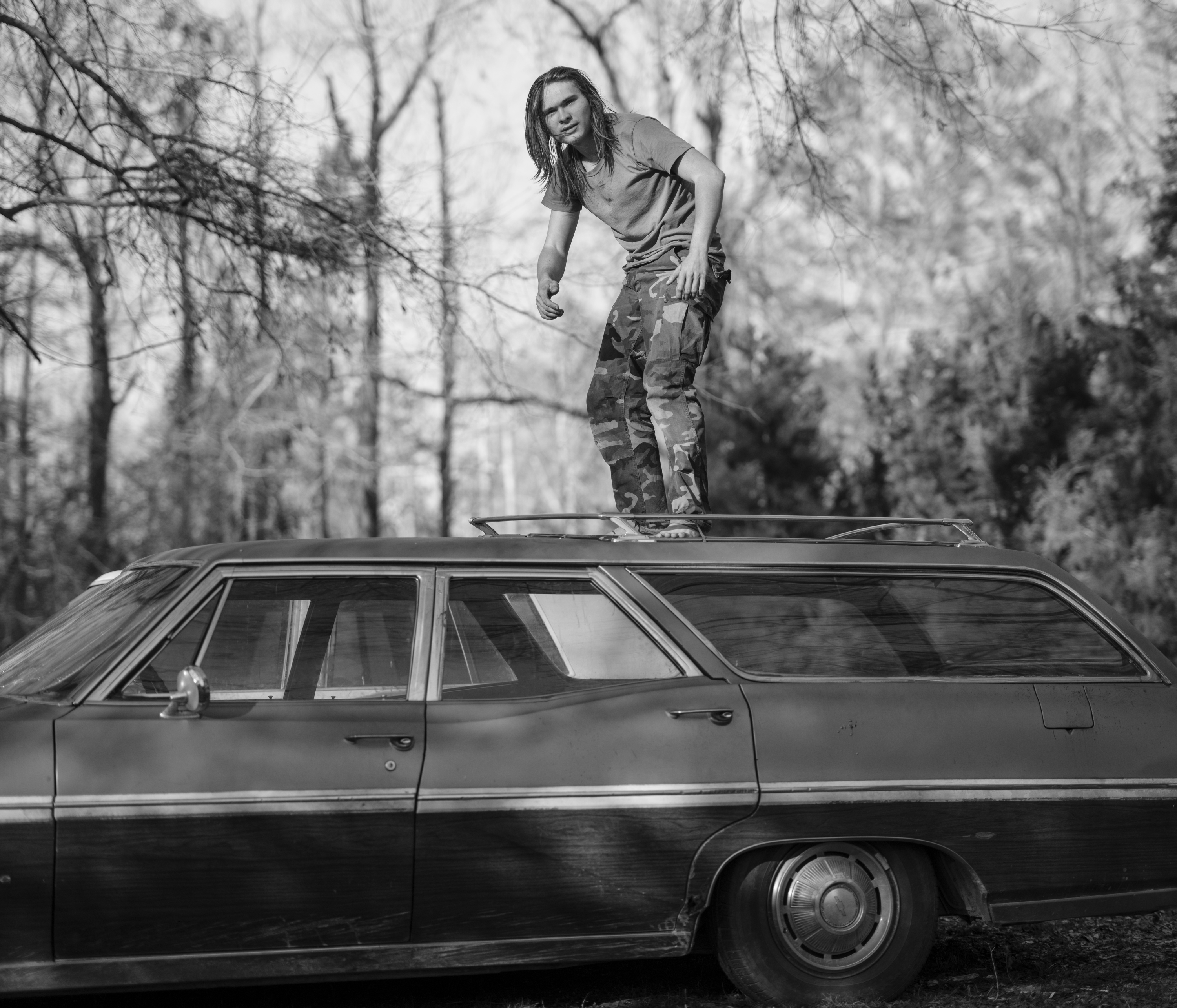
HOLY TRINITY, RUSSELL COUNTY, ALABAMA
EDDIE / APPALACHICOLA FORT SITE.
Located across the Chattahoochee River from present-day US Airborne School at Fort Benning, Georgia, a wattle and daub blockhouse fort was established in 1690 by Spain in an attempt to maintain influence among the Lower Creek people. The effect of the construction of the Apalachicola Fort site was that the local Creeks, instead of staying with the Spanish, migrated to English-controlled areas. This move undermined the purpose of the fort, which was already encumbered by a long supply line. It was consequently abandoned after just one year of use, and largely demolished by the Spanish prior to their departure.Archival pigment print
2020-2023
18x21 inches
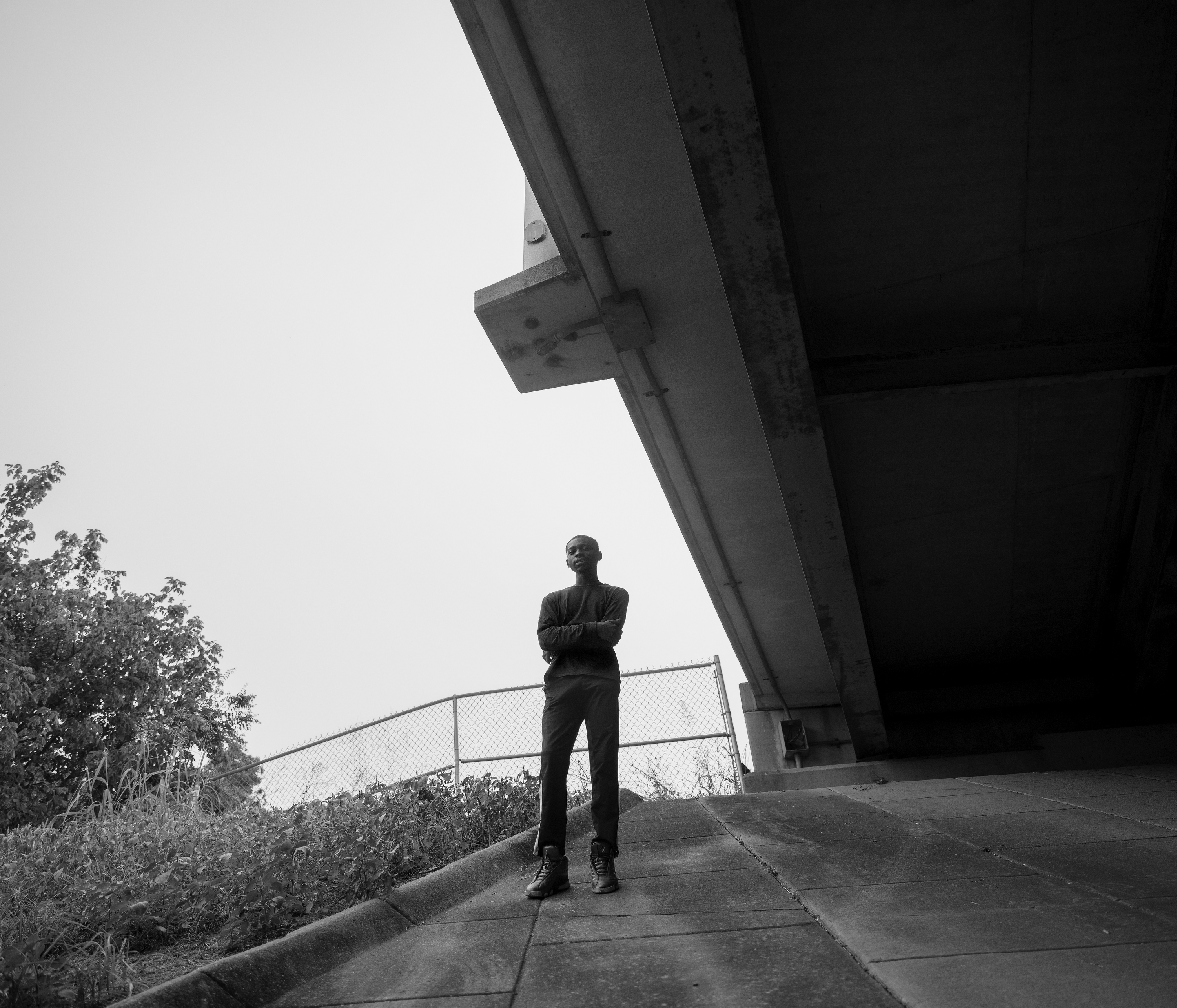
BIRMINGHAM, JEFFERSON COUNTY, ALABAMA
JEREMIAH
According to a 2020 investigation by Northeastern University, 123 Black people were killed by white police officers in Jefferson County between 1932–1968. In only two cases were officers charged for the killings. For 26 of the 36 years chronicled, the commissioner of public safety in Birmingham was Eugene “Bull” Connor, who infamously turned fire hoses and attack dogs on Civil Rights protesters in Birmingham in 1963.Archival pigment print
2020-2023
18x21 inches
.....................................